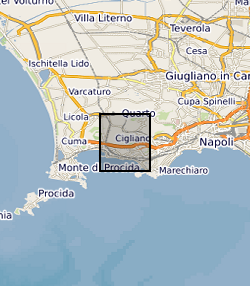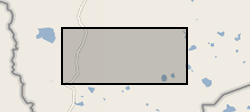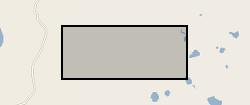Gravity
Type of resources
Available actions
Topics
Keywords
Contact for the resource
Provided by
Years
Formats
Representation types
Update frequencies
Scale
Resolution
-

The data set contains location (latitude and longitude), ellipsoidal height (m) and observed gravity of benchmarks at the Campi Flegrei caldera, Italy. The gravity and location data were collected between 8 and 12 July, 2015 using a Scintrex CG5 gravimeter (serial number: 572) in tandem with a TOPCON HiPer Pro Dual-Frequency GNSS base and rover system. The survey contained a total of 85 benchmarks in addition to the base station.
-
During the 2010/2011 Antarctic field season a collaborative NERC AFI (Antarctic Funding Initiative) project studying the basal boundary conditions of the Institute & Moller ice streams, West Antarctica, collected ~25,000 km of new high quality aerogravity data. Data were acquired using Lacoste and Romberg air-sea gravity meter S83, mounted in the BAS aerogeophysically equipped Twin Otter "Bravo Lima". Data are provided as XYZ ASCII line data. Data were collected as part of the UK Natural Environment Research Council AFI grant NE/G013071/1.
-
During the austral summer of 2004/05 a collaborative US/UK field campaign undertook a systematic geophysical survey of the entire Amundsen Sea embayment using comparable airborne survey systems mounted in Twin Otter aircraft. Here we present the portion of the survey covering the Pine Island Glacier basin led by British Antarctic Survey. Operating from a temporary field camp (PNE, S 77deg34'' W 095deg56''; we collected ~35,000 km of airborne survey data. Our aircraft was equipped with dual-frequency carrier-phase GPS for navigation, radar altimeter for surface mapping, wing-tip magnetometers, gravity meter, and a new ice-sounding radar system (PASIN). We present here the processed line aerogravity data collected using a LaCoste & Romberg air-sea gravity meter S83 mounted in the BAS aerogeophysically equiped Twin Otter aircraft. Data are provided as XYZ ASCII line data.
-
Long-range airborne geophysical measurements were carried out in the ICEGRAV campaigns (2010-2013), covering hitherto unexplored parts of interior East Antarctica and part of the Antarctic Peninsula. The airborne surveys provided a regional coverage of gravity, magnetic and ice-penetrating radar measurements for major Dronning Maud Land ice stream systems, from the grounding lines up to the Recovery Lakes drainage basin, and filled in major data voids in Antarctic data compilations.We present here the processed line aerogravity data collected using a LaCoste & Romberg air-sea gravity meter S83 mounted in the BAS aerogeophysically equipped Twin Otter aircraft. Data are provided as XYZ ASCII line data.
-
A British Antarctic Survey Twin Otter and survey team acquired 15,500 line-km of aerogeophysical data during the 2001/02 Antarctic field season along a 1-km line spacing grid with tie-lines 8 km apart. Twenty-five flights were flown from the South African base SANAE, for a total of 100 survey hours. We present here the processed line aerogravity data acquired using a LaCoste & Romberg air-sea gravity meter S83 mounted in the BAS aerogeophysically equipped Twin Otter aircraft. Data are provided as XYZ ASCII line data. This high-resolution aerogeophysical survey was part of the "Magmatism as a Monitor of Gondwanabreak-up" project (MAMOG) of the British Antarctic Survey, which included new geochemical investigations, structural geology, geochronology, and AMS studies over western Dronning Maud Land.
-
During the 2001-02 field season a regional survey was flown on a 10 km line spacing grid over the drainage basin of the Rutford Ice stream (West Antarctica), as part of the TORUS (Targeting ice stream onset regions and under-ice systems) project. We present here the processed line aerogravity data collected using a LaCoste & Romberg air-sea gravity meter S83 mounted in the BAS aerogeophysically equipped Twin Otter aircraft. Data are provided as XYZ ASCII line data.
-

Microgravity data collected at Uturuncu Volcano between March 2010 and November 2018 The file contains microgravity data collected between March 2010 and November 2018 in the Altiplano-Puna Volcanic complex.
-
This British Geological Survey (BGS) marine geophysical survey took place in July 2002 in the northern Rockall Trough and the northern end of Hatton Bank on board the RRS James Clark Ross (Cruise JR76). The purpose of the survey was 1) to in fill gaps in the existing seismic data coverage in order to address specific geological problems; 2) Identify windows in the Palaeogene lavas. Seafloor bathymetry data was collected using a Kongsberg-Simrad EM120 multibeam system. Subsurface seismic data were collected using an Airgun and Sparker, these data are archived by BGS and are available for download. Gravitational field, Magnetic field data were also collected. Most of the data were recorded digitally, and paper records were also generated. These data are archived by BGS. Technical details of the survey are contained in BGS Internal Report IR/02/152 (http://nora.nerc.ac.uk/id/eprint/528019). GeoIndex Offshore - https://mapapps2.bgs.ac.uk/geoindex_offshore/home.html?cruise=2002/2&.
-

Microgravity data collected at Uturuncu Volcano located in the Altiplano-Puna Volcanic Complex, central Andes, in November 2022. Raw data collected along a survey line spanning from Laguna Colorada to Laguna Verde using a field gravimeter. All data have been preprocessed and corrected for tidal and drift effects. Data are reported with respect to reference station UBAS located to the west of Uturuncu near the Laguna Colorada.
-
Report: Day, GA. 1970. Cruise Report for MV Surveyor. MGU Project 70/02. (BGS Report No WB/MG/70/6). Positioning: Main Chain Decca with towed log. Echo Sounding: MS 32 Sonar Systems: No information on the side-scan sonar. Transit sonar also used. Seismic Systems: Sparker System: Little specific information. Prototype Geomechanique sparker array used for latter part of the survey. Most lines run at 1kJ Gravitymeter: LaCoste and Romberg gravity meter. Magnetometer: RVU Barringer magnetometer
 NERC Data Catalogue Service
NERC Data Catalogue Service